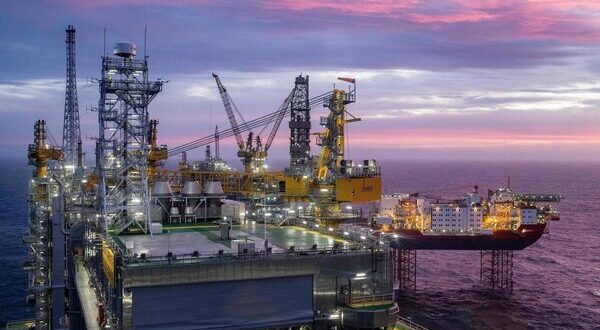OPEC has raised forecasts for global oil demand through to the middle of the century, even as the world shifts away from fossil fuels to avert catastrophic climate change.
Oil consumption will climb 16% over the next two decades to reach 116m barrels a day in 2045, about 6m a day more than previously predicted, the Organization of Petroleum Exporting Countries said in its World Oil Outlook.
Road transportation, petrochemicals, and aviation will drive the growth, it said. India represents the biggest expansion, more than doubling its consumption to almost 12m barrels a day, followed by China, with a gain of 4m a day, or 26%.
“There has been pushback against the opinion that the world should see the back of fossil fuels, as policies and targets for other energies falter due to costs and a more nuanced understanding of the scale of the energy challenges,” said OPEC secretary-general Haitham Al Ghais.
Western leaders are re-evaluating climate policies as they face voters exhausted by inflation, with the UK last month delaying a ban on petrol car sales. Energy companies BP Plc and Shell Plc have shifted their focus back to their traditional oil and gas businesses after experimenting with a faster switch to renewable energy.
Yet few consider the unabated use of hydrocarbons on the timeframe envisioned by OPEC as tenable.
The International Energy Agency predicts that demand for fossil fuels will plateau by the end of this decade, as countries switch to renewable energy sources and electric vehicles. Investment in new oil projects must cease now if governments want to meet net zero emissions targets and limit temperature increases to 1.5C, it says.
This summer was likely humanity’s hottest yet, bringing deadly heatwaves to India, Greece, the US, and Japan, while increasingly energetic storms wrought devastation in Asia and Africa. In the Atlantic, exceptionally hot waters caused mass coral bleaching and some deaths in the Florida Keys coral reefs.
OPEC also boosted projections for how much oil it will supply in coming years, even though most of its members — hobbled by underinvestment, operational disruptions, and political instability — are not currently able to pump at their full production quotas.
It sees OPEC liquids supply rising roughly 14% to 38.9m barrels a day by the end of the decade, ultimately reaching 46.1m a day in 2045.
However, the data does not break out separate numbers for crude oil, which OPEC uses for its system of production quotas, and so does not give a complete indication of the organisation’s sway in world markets.

The field centre of the Johan Sverdrup oil field in the North Sea west of Stavanger, Norway, is pictured on January 7, 2020. - Johan Sverdrup, situated some 140 km off the south western coast of Norway and operated by Equinor, is the third largest oil field on the Norwegian continental shelf, with expected resources of 2.7 billion barrels of oil equivalent. (Photo by Carina Johansen / NTB Scanpix / AFP) / Norway OUT (Photo by CARINA JOHANSEN/NTB Scanpix/AFP via Getty Images)
 Iran Energy News Oil, Gas, Petrochemical and Energy Field Specialized Channel
Iran Energy News Oil, Gas, Petrochemical and Energy Field Specialized Channel



